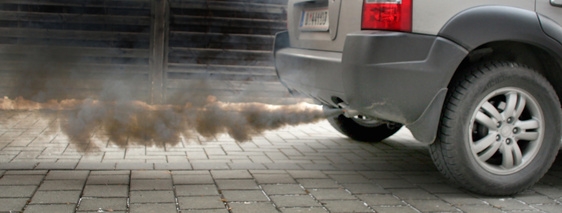
Today's vehicles run on a variety of fuels, some of which you probably aren't aware of. While it's true than the vast majority of vehicles run on gasoline, the technology to burn other fuels to meet our transportation needs does exist, with specific advantages and disadvantages for each.
Gasoline or petrol is the most common fuel used in cars today. This specialized fossil fuel is designed for four-stroke engines like the ones found in common cars. Gasoline allows for quick starting, fast acceleration, easy combustion and quiet operation, according to the University of Michigan website on fossil fuels.
The hydrocarbons contained in gasoline and its production of carbon dioxide when burned contributes to pollution, smog and global warming. Although it is the most readily available fuel, it is considered to be a temporary source of fuel because of its cost, environmental effects and limited resources.
Diesel fuel is widely used in transport vehicles such as tractor-trailer trucks, buses, boats and trains. This fossil fuel is also non-renewable, like gasoline. Although it contributes less carbon dioxide to the environment, diesel creates more organic compounds and nitrous oxide that cause smog.
Diesel vehicles tend to last longer than gasoline vehicles, and they have 30 percent better fuel efficiency than the average gasoline vehicle, according to the Petrol Prices website.
Liquefied petroleum, better known as propane, is a clean fuel alternative to gasoline that is used in common vehicles on a limited basis. You'll find hybrid cars in the United Kingdom that have been designed to use propane, but generally the only way to get a propane vehicle in the United States is to have a gas engine converted.
Liquefied petroleum produces fewer toxins when burned and does not contribute to smog in the same way that diesel and gasoline do. Propane is also less expensive than gasoline.
Gas and diesel engines can be converted to run on compressed natural gas, or CNG. CNG is a clear, odorless and non-corrosive gas that can be used in liquid or gas form to run a combustion engine.
Vehicles fitted with a CNG fuel system can be expected to produce 80 percent less ozone-forming emissions than gasoline burning cars, according to the Consumer Energy Center website. CNG filling stations are in place is select areas in the country, primarily in California.
Ethanol is a bio-fuel alternative to gasoline that's made from the conversion of sugar cane, corn, barley and other natural products. Ethanol has become popular as a fuel source because in most cases it's one of the only fuels that can fuel a gasoline engine without modifications. Many car models can run on 100 percent ethanol, but it is more commonly used as an additive.
Some states have mandated the addition of ethanol to help cut down on the emissions and contamination caused by pure gasoline components. E10, which is gasoline mixed with 10 percent ethanol, is available at most gas stations in America today. Some places use even higher concentrations.
Bio-diesel is a diesel substitute made from sugar beet, rapeseed or palm oil. Individuals sometimes make this substance by collecting used oil from restaurant fryers.
Bio-diesel burns much cleaner than standard gas or diesel and produces far less carbon dioxide emissions when used. However, continued production of this substance may result in excessive deforestation.